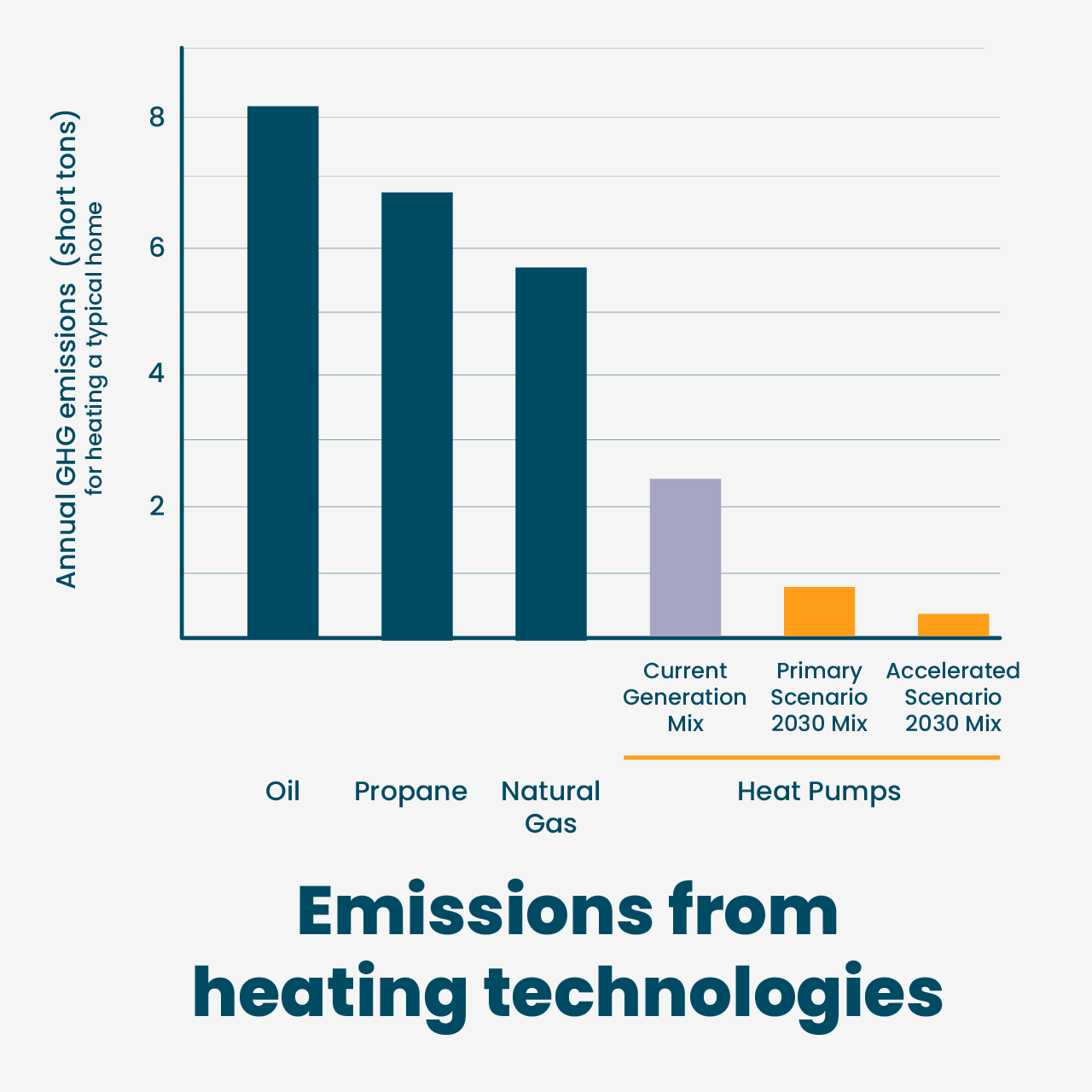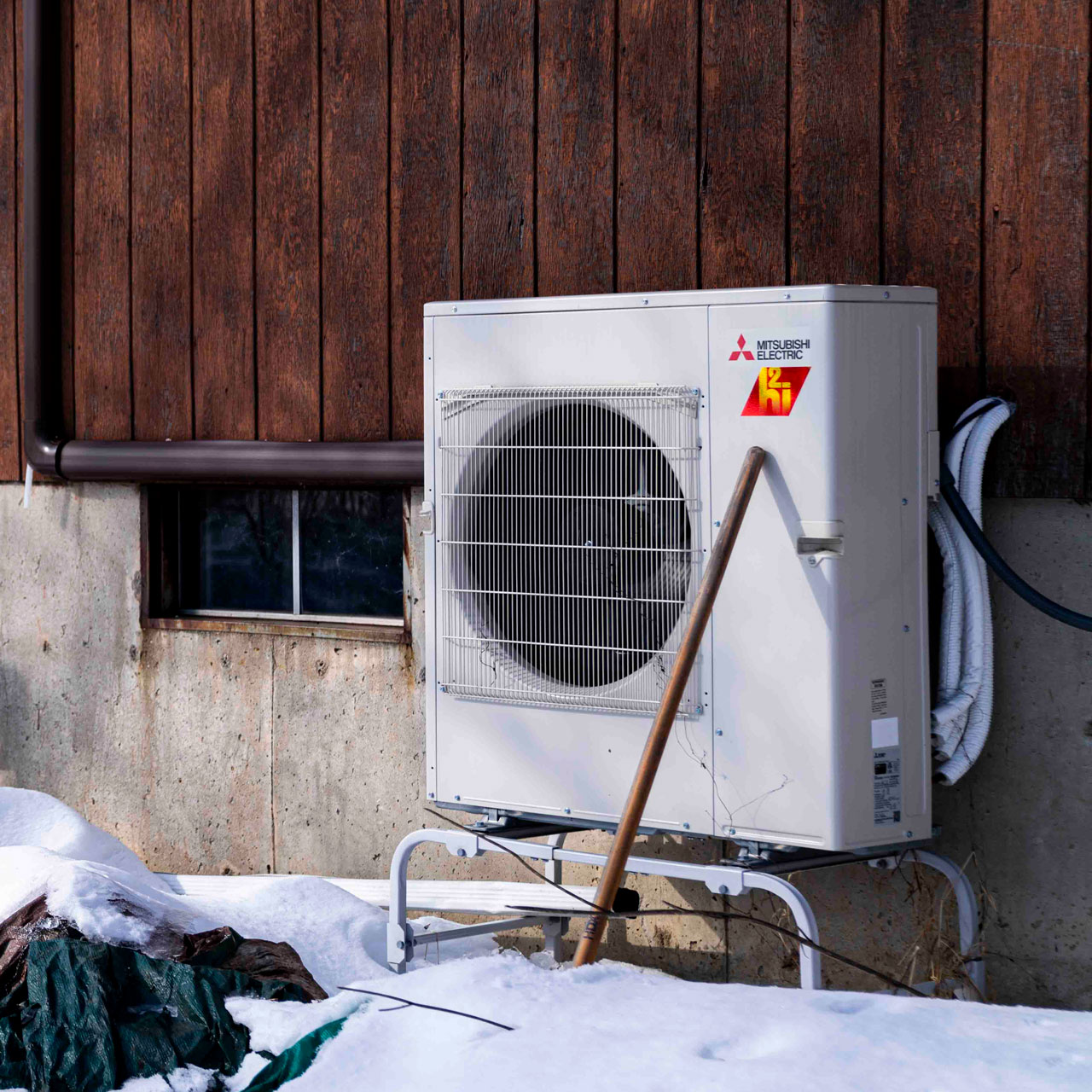What if we could reduce GHG emissions by transforming the cold climate heating market?

The Challenge
Fossil fuels are today’s dominant heating source. Transitioning to electric heat pumps has the potential to dramatically decrease GHG emissions, but there are barriers to market adoption.
The Solution
By studying lessons learned from heat pump deployment in the Northeast, we developed recommendations to facilitate successful heat pump adoption nationwide. Services: Building Decarbonization , Energy Efficiency
The Impact
With a clearer path for electrifying space and water heating, states and utilities can expedite fuel switching to meet GHG reduction goals and increase customer savings.
Fuel switching can result in GHG emission reductions of 60% or more
Fossil fuels burned onsite account for about 30 percent of U.S. emissions from buildings and this percentage is growing as states get more clean electricity from the wind and sun. Heat pumps enable building electrification which transitions us away from using fossil fuels and taps into the growing supply of renewable electricity.
This technology has the potential to reduce or eliminate the need for fossil fuels in heating air or water by tapping into the growing supply of renewable electricity. What’s more, unlike fossil-fired heating technologies, which typically lose efficiency over time, the GHG benefit of heat pumps increases as the electric grid becomes cleaner and more efficient.
Heat pumps can also provide cost savings for homeowners and businesses, particularly compared to oil and electric resistance heating systems. While switching from fossil fuels to heat pumps can reduce emissions from heating by 60% or more, maximizing their environmental benefit depends on the policies, programs, and mechanisms used to increase their adoption. Advancing the heat pump market requires a strategic approach.

The Acadia Center's EnergyVision 2030 report shows that with the electricity generation mix in the Northeast as of 2018, heating a home with heat pump technology and electricity results in a significant reduction in GHG emissions in comparison to heating with oil, propane, or natural gas.
Chart adapted from Acadia Center, acadiacenter.org.
Leveraging Northeast heat pump building decarbonization programs for nationwide adoption
VEIC was hired by the Natural Resources Defense Council (NRDC) to study policies and programs in the Northeast. We identified the key factors driving successful heat-pump deployment in this region and leveraged the learnings to generate a set of recommendations for other regions to realize the full value of this promising technology.
NRDC selected VEIC based on our understanding of the Northeast, our experience transforming the market in Vermont, and our rigorous approach to a comprehensive study. We considered more than 30,000 annual installations across 7 states, examining factors such as:
- Existing GHG reduction goals and regional policies
- Implementation programs
- Funding sources
- Program rules for fuel switching
- Energy savings calculations
- Cost-effectiveness assessments
- Program metric impacts
- Quality assurance and quality control measures
- Grid flexibility and demand response
- Customer engagement and behavior
We compared these factors against measurable outcomes to understand what works best to drive heat pump adoption. The result is a resource that looks at scenarios playing out across New England and New York, covering all aspects of the heat pump market and how viable the savings are.
“We partnered with VEIC because of their experience both studying and implementing energy efficient technologies. The lessons learned from the Northeast pave the way for the broader heat pump adoption needed to meet tomorrow’s GHG goals. ”

We found that the most successful programs combine two factors:
- Direct engagement with contractors and distributors so that the products are available from knowledgeable installers, and
- Significant incentives (at least a $500 cash incentive per unit from local, state, or federal rebates, including Inflation Reduction Act program funding) to encourage customers to choose them.
Our study points to these and other recommendations:
- Set concrete targets and dedicated funding. States that set binding targets for heat pump adoption and establish a dedicated funding source have been the most successful so far.
- Value all of the benefits. Heat pumps offer benefits in efficiency, comfort, GHG savings, and often cost as well.
- Ramp up programs quickly with a targeted approach. Target heat pumps especially to: 1) Homeowners who heat with electric resistance, oil, or propane heaters, as this provides the most energy cost savings; and 2) New construction and deep retrofits with other energy efficiency measures and solar, as this reduces both installation and operating costs.
- Provide contractor and customer training to encourage quality installation and efficient operation. Several recent evaluations in the Northeast revealed lower than anticipated savings because systems were not optimally designed and operated. Training contractors to select the right heat pump, to size it correctly, and to ensure quality installation is key. Customer training on heat pump controls is also critical for maximum impact.
More detail on these and other insights from the Northeast are available in the full report, aimed at helping other regions reduce GHG emissions, save energy, and lower customer bills.
Who we are and how we help
VEIC provides services under a broad clean energy umbrella that includes energy efficiency, building decarbonization, transportation electrification, and clean and flexible grid solutions. We work with utilities, state energy offices, transit agencies, non-profits, businesses, and more to advance electrification and decarbonization efforts across the country. From decarbonization program planning and implementation to federal funding services, we help clients achieve their goals and make an impact.
Reach out today so the VEIC team can learn more about your building electrification and energy efficiency ideas.


